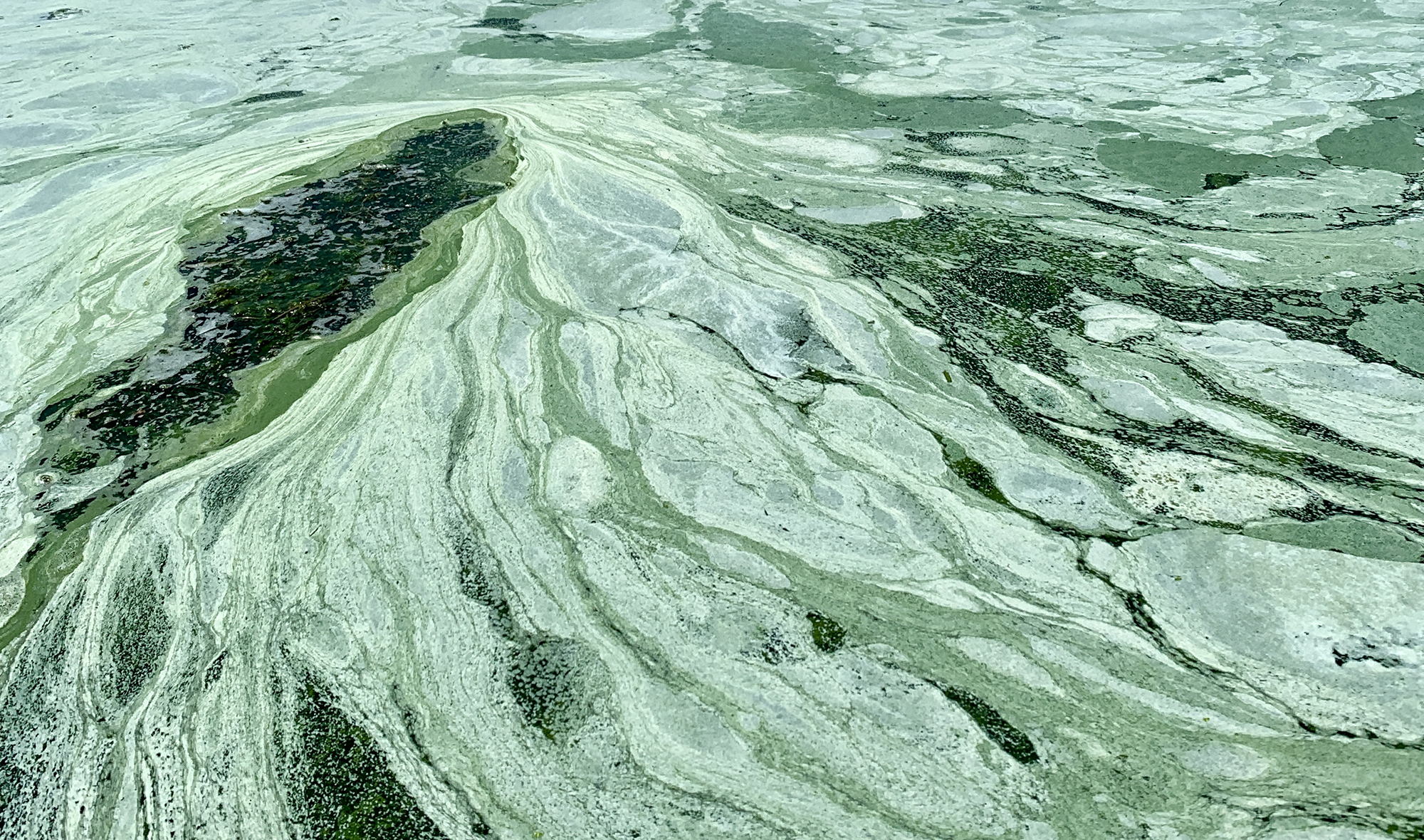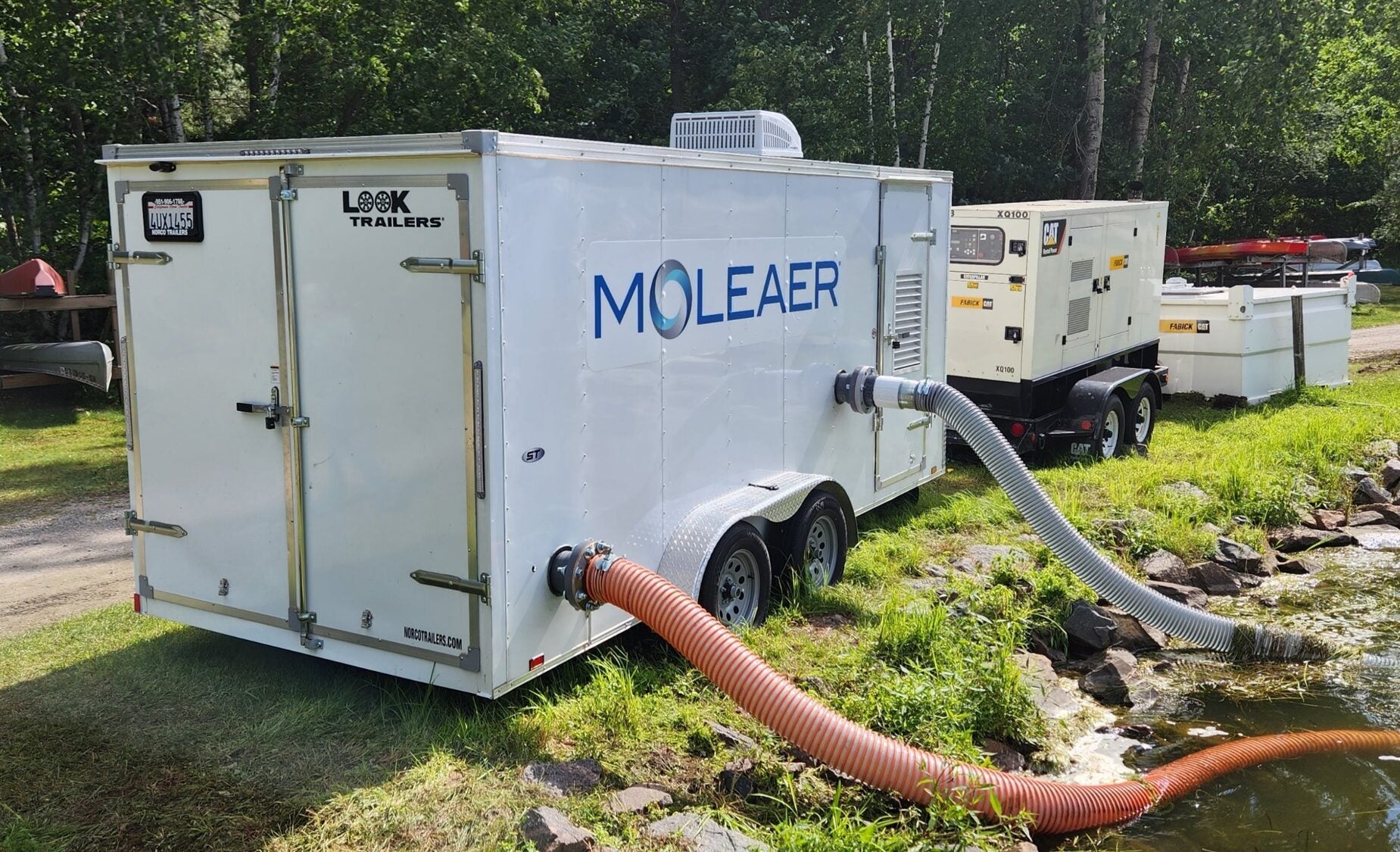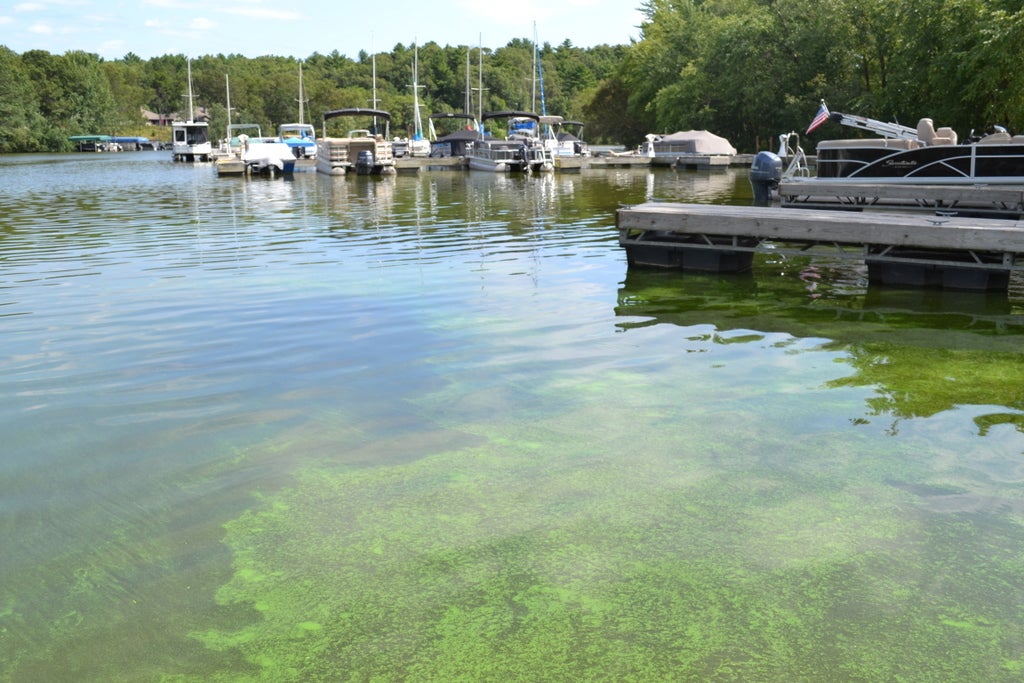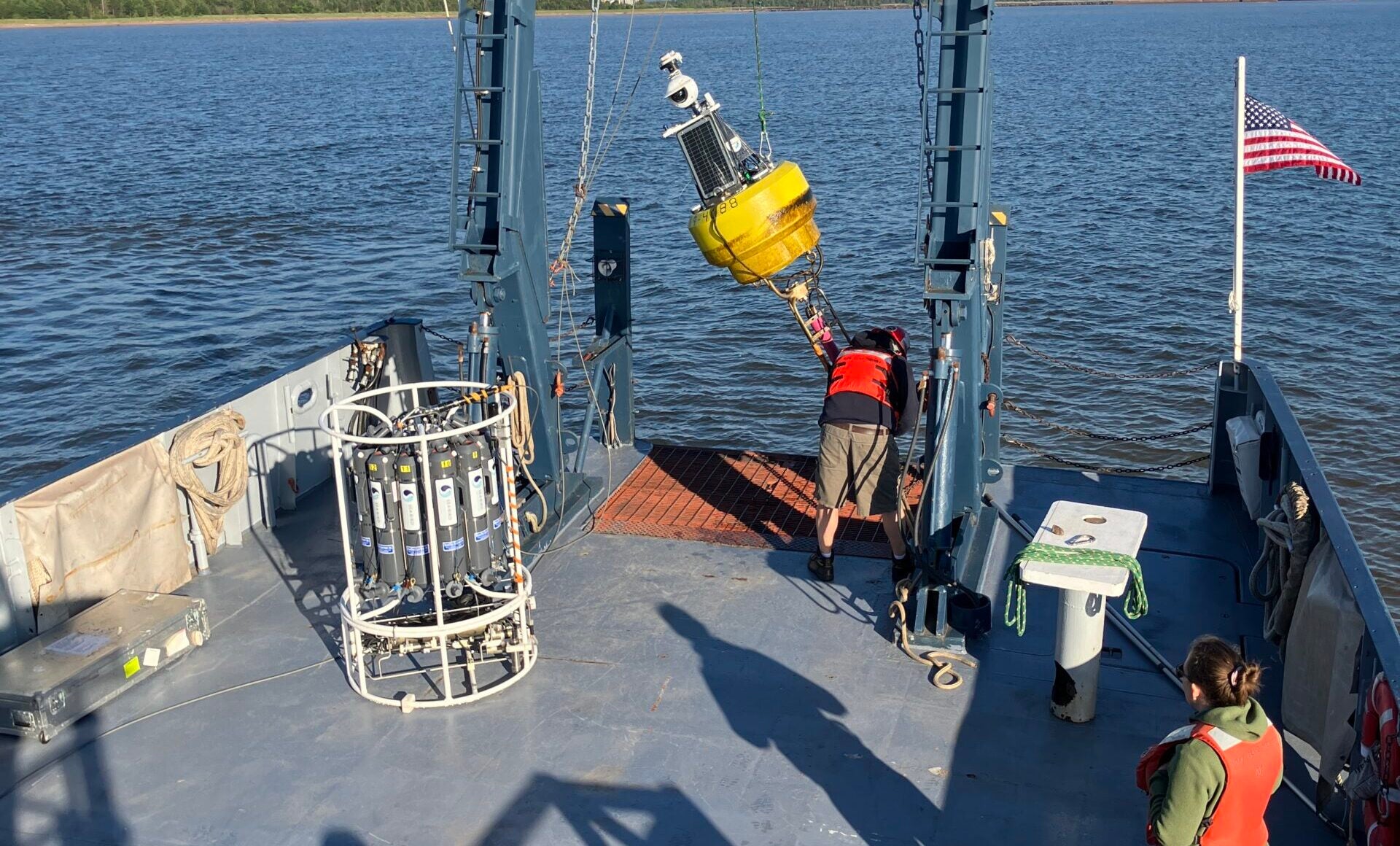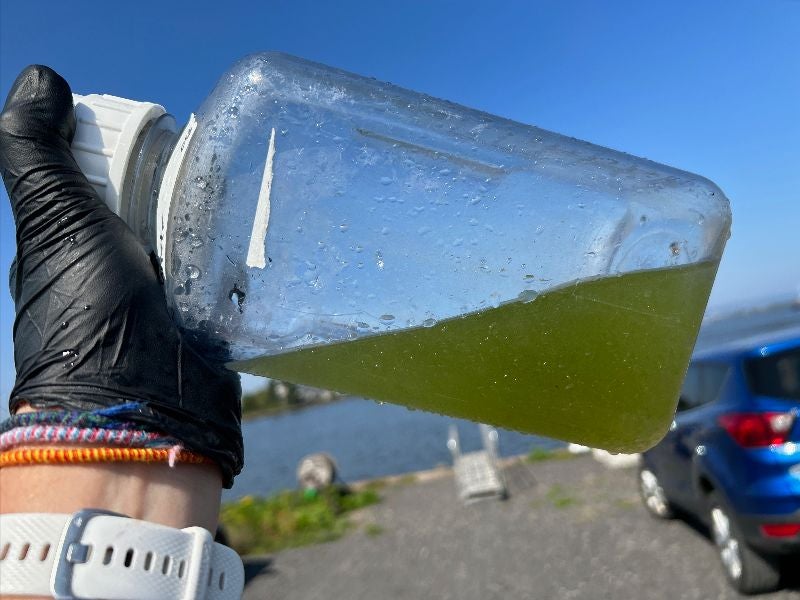Blue-green algae blooms on large, shallow and nutrient-rich lakes may be related to ongoing drought conditions in Wisconsin this summer.
The state has already received at least 93 algal bloom reports so far this year compared to 69 reports at the end of July last year. That’s according to figures provided by the Wisconsin Department of Natural Resources. The agency said the increase in reports this year is likely due to sightings of pollen and filamentous green algae that looks like long green hairs growing in the water. The latter can form floating green mats that turn brown and become smelly as they break down.
About half the blooms reported so far — 48 — have been identified as cyanobacterial blooms. Cyanobacteria, often referred to as blue-green algae, has the ability to produce toxins that can make people or their pets sick.
News with a little more humanity
WPR’s “Wisconsin Today” newsletter keeps you connected to the state you love without feeling overwhelmed. No paywall. No agenda. No corporate filter.
Gina LaLiberte, the agency’s harmful algal bloom coordinator, said it’s possible drainage lakes may see more drought-related effects on water quality because rivers typically flow into them. She said conditions may begin to stagnate in those lakes if there’s not as much water moving through them due to a lack of rain.
“The water gets really warm, the nutrients aren’t moving through, so that’s where you might be seeing more issues with cyanobacterial blooms,” LaLiberte said.
LaLiberte said she’s received reports and photos confirming blue-green algae blooms on large and shallow drainage lakes like Lake Winnebago and Lake Petenwell in central Wisconsin.
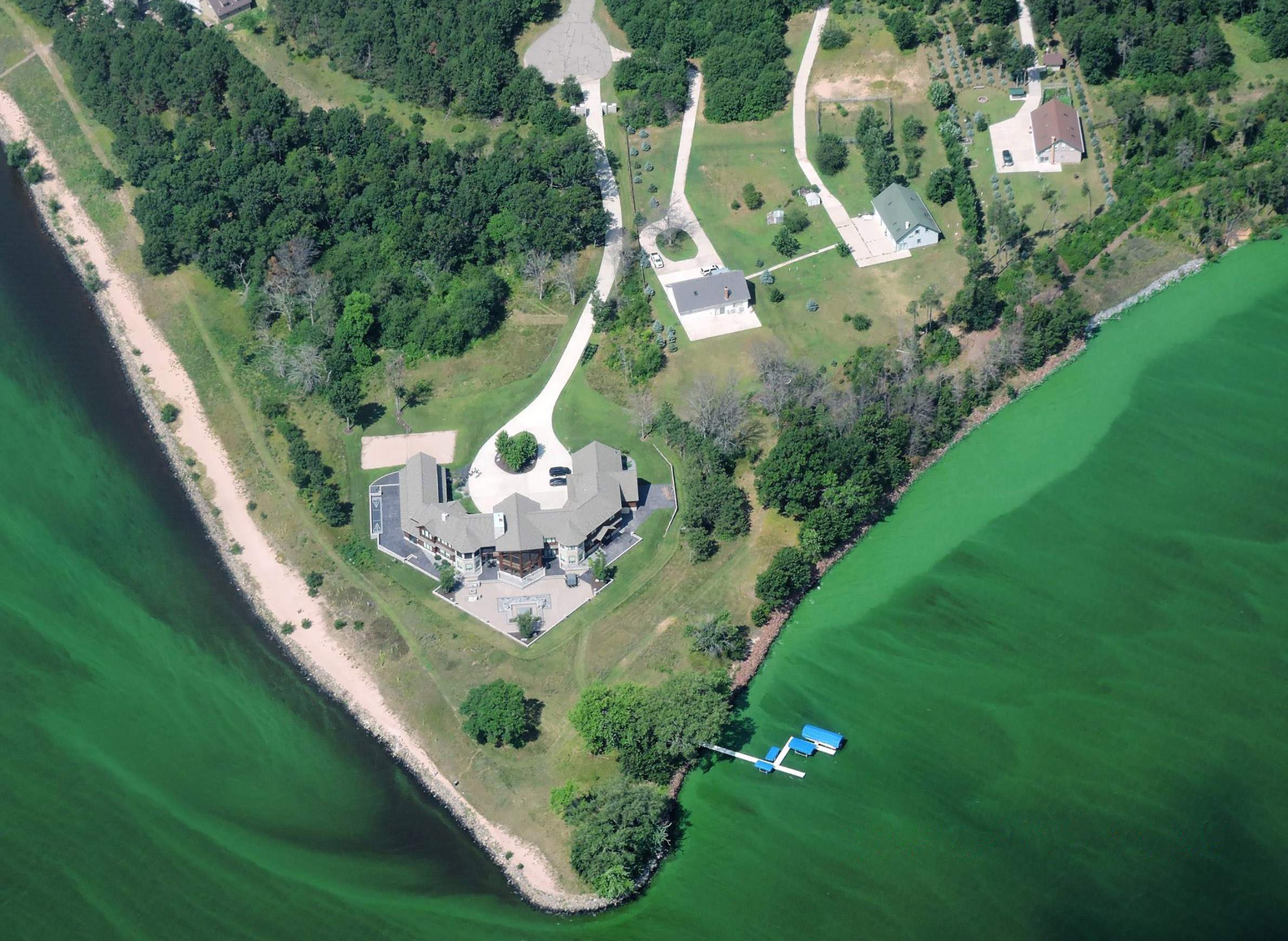
Despite the presence of blue-green algae, Rick Georgeson who lives and sails on Lake Petenwell said water conditions appear much better than years past. He attributes improvements in water quality to the efforts of producer-led groups that have formed in the Wisconsin River watershed.
“These farmers are making some huge changes in the way they farm,” Georgeson said. “Cover crop and no till planting seems to be making a huge difference in what we’ve seen.”
Satellite data has also detected cyanobacterial blooms on Lakes Petenwell and Castle Rock, as well as the Chetek Chain of Lakes in northwestern Wisconsin.
The Chetek Lakes Protection Association represents around 500 property owners on the chain’s six lakes, which see around 40,000 visitors each summer. That’s according to Jamey Lideen, president of the association. Lideen said he’s unaware of any blue-green algae blooms and hasn’t observed any changes under drought conditions this year. Although, he said blooms often form in shallow bays on the lakes with low water flows after the July 4th holiday.
“It’s very typical later in the summer that people in these small bays smell the decaying algae or see a buildup of it in those areas,” Lideen said, noting decaying duckweed is often mistaken for blue-green algae.
LaLiberte said she hasn’t received any bloom reports from the Chetek Chain of Lakes, but state health officials received a question from a resident about the safety of water on the chain’s Prairie Lake.
The Wisconsin Department of Health Services has received and investigated at least 14 reports of illnesses in animals and humans that were suspected to stem from blue-green algae exposure. Of those, only three were potentially related to blue-green algae.
“Symptoms associated with these cases have included things like fever, vomiting, diarrhea, skin rash,” Jordan Murray, harmful algal bloom epidemiologist for DHS, said. “We had one dog illness so far, and symptoms with the dog included things like lethargy, seizure-like symptoms and vomiting as well.”
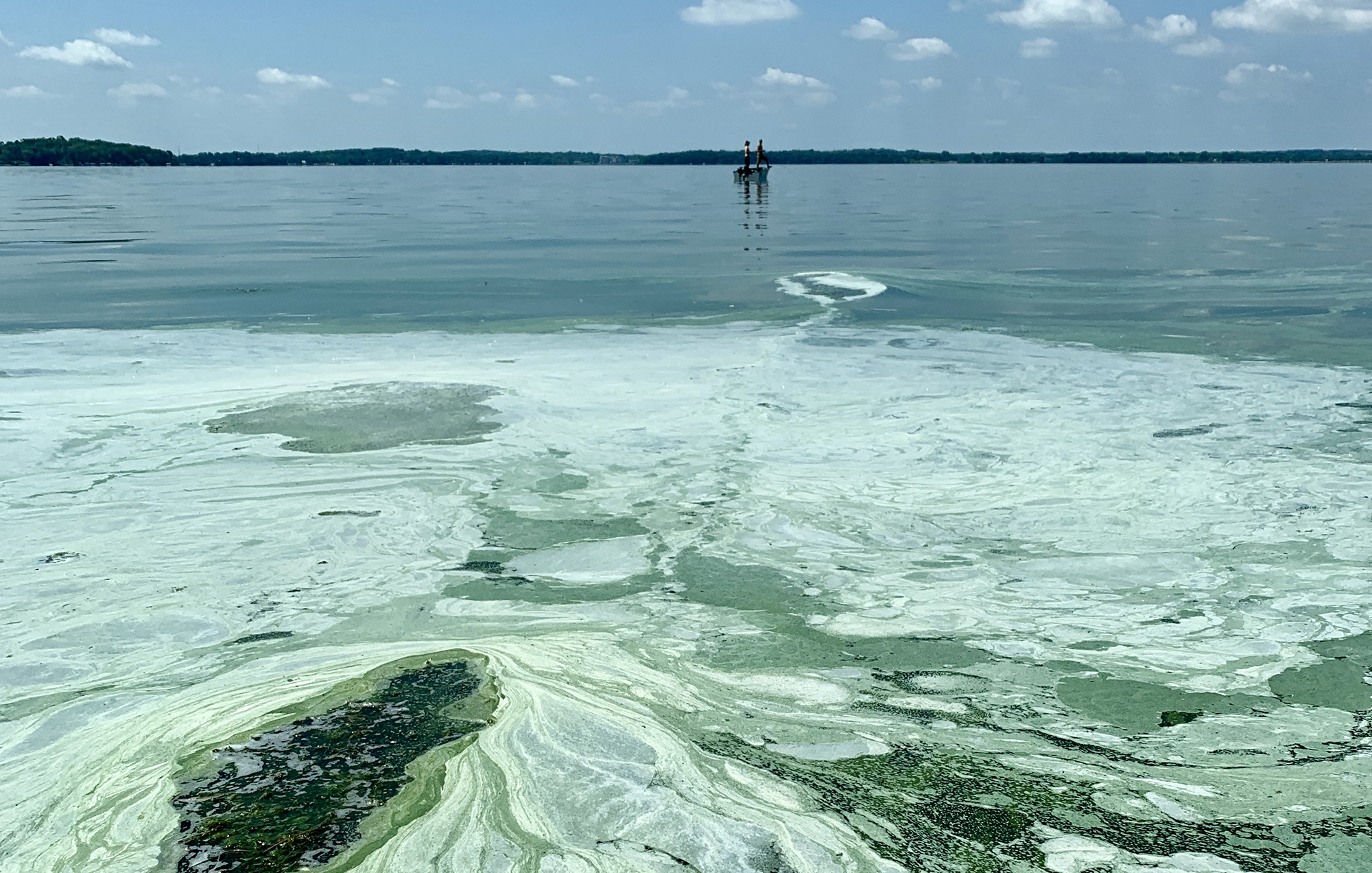
State health officials typically receive an average of 25 reports each year when blooms are most likely to form between May through September.
“With the sort of drought conditions that we’ve been experiencing, hot weather, lack of rain creates these prime conditions for blooms to grow and to be produced,” Murray said. “With that being said, it’s possible that we get more illness reports throughout the end of the month and then into August as well.”
Kids are especially susceptible to exposure. Murray said people can keep their kids and pets safe by steering clear of water that resembles green paint or pea soup. She also advised parents to remind their children not to swallow water while swimming.
Ingesting water is the primary way that people can get sick, but people can also come into contact with blue-green algae toxins on their skin or by breathing in water droplets. For animals, health officials recommend giving their dogs breaks from swimming and rinsing them off after any potential exposure.
As for the Great Lakes, the DNR’s LaLiberte said there have been no reports of blooms on the open waters of Lake Michigan or Lake Superior. Although mats of blue-green algae were found attached to the sediment of Barker’s Island beach in Superior on July 12 and 13.
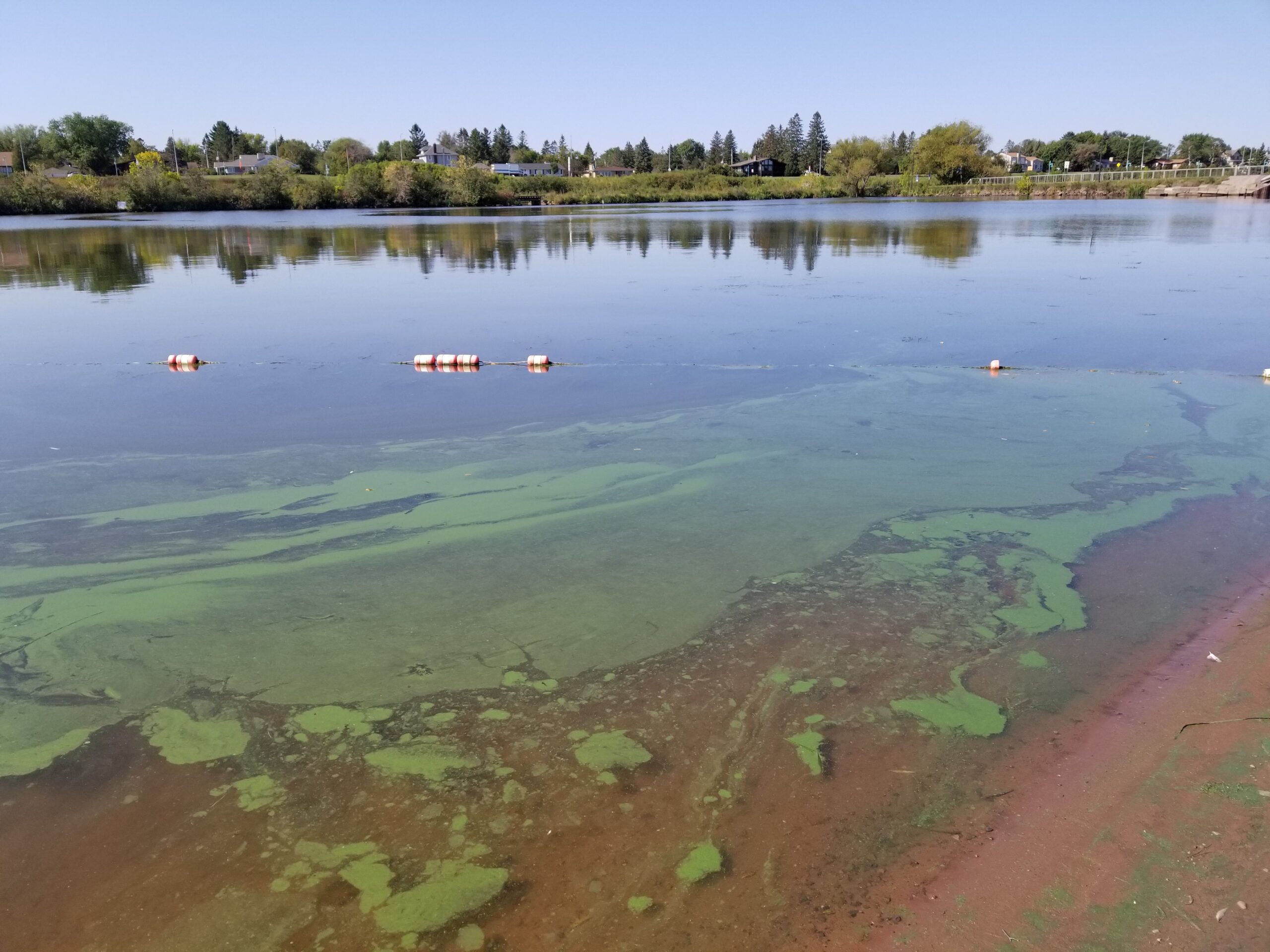
Kait Reinl, a researcher at the Lake Superior National Estuarine Research Reserve, said the mats contained two species of blue-green algae that have the potential to produce toxins.
“But we don’t have any evidence that any toxins were actually being produced,” Reinl said.
Toxic blue-green algae was found for the first time two years ago in the inlet of Lake Superior. It was a concerning discovery in the progression of blooms observed on the lake. The first documented blue-green algae bloom on Lake Superior formed in 2012 after massive flooding in the region. That was followed by another large bloom in 2018 that stretched about 50 miles along the lake’s shore.
Researchers are keeping a close eye on blooms as climate change drives temperatures higher, warms lakes and causes more extreme weather events that set the stage for harmful algal blooms. State regulators and researchers urge people to report any blooms or illnesses.
Wisconsin Public Radio, © Copyright 2026, Board of Regents of the University of Wisconsin System and Wisconsin Educational Communications Board.

